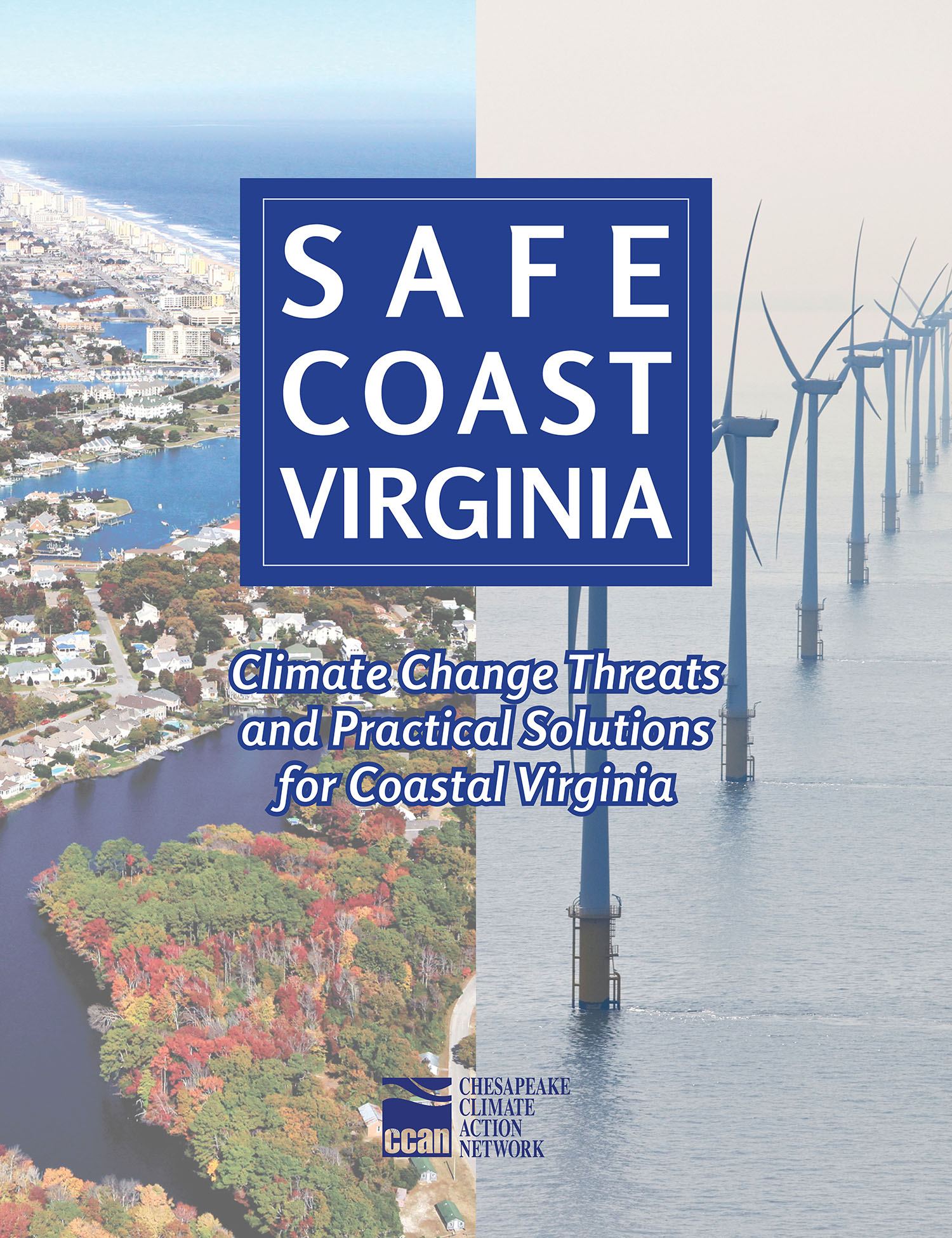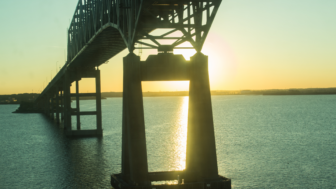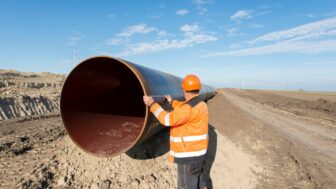For Immediate Release
July 9, 2014
Contact:
Jeanne McCann, 301-656-0348 or 301-741-6234, jeanne@thehatchergroup.com
Kelly Trout, 240-396-2022, kelly@chesapeakeclimate.org
Report Details Costly Damage from Virginia’s Rising Tides; Offers Policy Solutions for Future
Group proposes 10 recommendations to reduce carbon pollution and manage sea level rise
Top policy proposal could raise an estimated $200 million annually for coastal adaptation by 2020 while cutting greenhouse gas emissions
Norfolk, VA – Experts detail the threat of rising tides and outline ten bold but credible recommendations to prepare for sea-level rise and reduce carbon pollution in a first-of-its-kind report aimed at safeguarding coastal Virginia. The recommendations include a call for Virginia to secure hundreds of millions of dollars in flood protection funds by participating in a regional carbon cap program for power plants. It also calls on the state to enact a mandatory clean electricity standard, encourage development of solar and wind power, improve storm evacuation and shelter efforts, and coordinate efforts to maintain national security in an area that includes the world’s largest naval base.
The report—titled Safe Coast Virginia—was released today outside the Unitarian Church of Norfolk, which is being forced to consider relocation due to severe flooding from rising sea levels. The report combines the latest climate science with stories of Virginians already suffering as a result of rising tides, bigger storms, more frequent flooding and rising insurance rates. It predicts that the situation will only get worse. Sea level rise projections for Virginia’s Tidewater region are significantly higher than the worldwide average.
“Hampton Roads is the New Orleans of the East Coast, the ‘ground zero’ for climate change,” said Mike Tidwell, executive director of Chesapeake Climate Action Network, which published the report. “But Virginia also has the chance to be a worldwide leader—and example—in clean energy production and climate change adaptation. This report provides a roadmap for how to get there.”
“Much as we love our church home, we’re not able to stay here,” said Brian Brennan, Director of Religious Education at the Unitarian Church of Norfolk. “Climate change is happening right now. It’s not in some distant future, and Virginia must take action.”
This is the first climate solutions plan to emerge following Governor Terry McAuliffe’s highly praised executive order of July 1 re-establishing the Virginia Climate Change Commission. It also follows the federal Environmental Protection Agency’s proposed “Clean Power Plan,” which requires states to reduce pollution from carbon-intensive power plants.
One of the report’s most significant recommendations is for Virginia to participate in the Regional Greenhouse Gas Initiative (RGGI), a cooperative effort among nine eastern states from Maine to Maryland that reduces greenhouse gas emissions through a cap on carbon emissions and has raised $1.8 billion in proceeds for participating states. Safe Coast Virginia warns that by not participating, Virginia is leaving hundreds of millions in new revenue on the table that could be used for flood protection and prevention as sea levels rise in coastal Virginia.
Based on RGGI modeling data, the report finds that Virginia could raise up to $200 million annually by 2020 if it joins the program.
Other recommendations call for Virginia to:
- Adopt a mandatory energy efficiency standard that reduces greenhouse gas emissions.
- Adopt a mandatory clean electricity standard.
- Improve emergency planning in the Hampton Roads region for climate-related disasters by coordinating efforts between state and local planning officials to improve evacuation and emergency shelter management efforts.
- Enact targeted new state policies to encourage significant development of solar power and offshore wind energy to reduce carbon emissions.
- Provide dedicated state funding for climate change adaptation efforts in Virginia’s coastal region.
- Form an integrated task force focused on protecting military assets.
- Protect communities through “living shoreline” adaptation measures.
- Develop local “accommodation” strategies, such as raising the maximum building-height limits and expanding wetlands—as well as considering “strategic retreat” from vulnerable areas.
Military and business communities warn that the costs of climate change—estimated to be in the billions over the next two decades—will be crippling, and that action must be taken for national security as well as economic reasons. The Hampton Roads region of coastal Virginia is home to the largest naval installation in the world, and Defense-related activities and spending account for 41 percent of the region’s economy.
“The military is a huge part of the Hampton Roads economy, and hugely reliant on the region’s infrastructure,” said retired Captain Joseph Bouchard, former commanding officer at Naval Station Norfolk and a former Virginia state delegate. “It makes good strategic and economic sense for Virginia’s leaders to embrace many of the readily available solutions outlined in this report.”
Other notable findings in the report:
- Using existing technologies, Virginia could generate almost 17 times its annual electricity demand through solar power alone.
- The Virginia Office of Veterans Affairs and Homeland Security estimates that up to 500,000 people could be expected to evacuate the region in the event of a hurricane, with 50,000 needing public emergency shelter. Virginia’s state-managed shelters can currently handle fewer than 20,000 people.
- While Dominion Virginia Power won the rights to more than 113,000 offshore acres for wind development off Virginia’s coast—with the potential to power 700,000 Virginia homes—the company currently has plans to build only two offshore wind test turbines in 2018. This is far less than what is needed.
Safe Coast Virginia includes photos, maps and data that explain complex science in layperson’s terms, as well as a thorough review of the most current climate science available.
Read the full Safe Coast Virginia report at: http://chesapeakeclimate.org/wp-content/uploads/2014/07/Safe-Coast-Virginia-Report-July2014.pdf
###
The Chesapeake Climate Action Network (CCAN) is the oldest and largest nonprofit organization dedicated exclusively to fighting global warming in Virginia, Maryland, and Washington, D.C. Our mission is to build and mobilize a powerful grassroots movement in this unique region that surrounds our nation’s capital to call for state, national and international policies that will put us on a path to climate stability.






